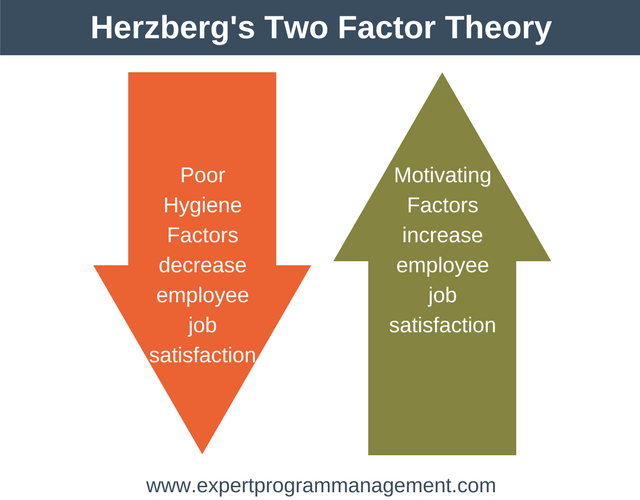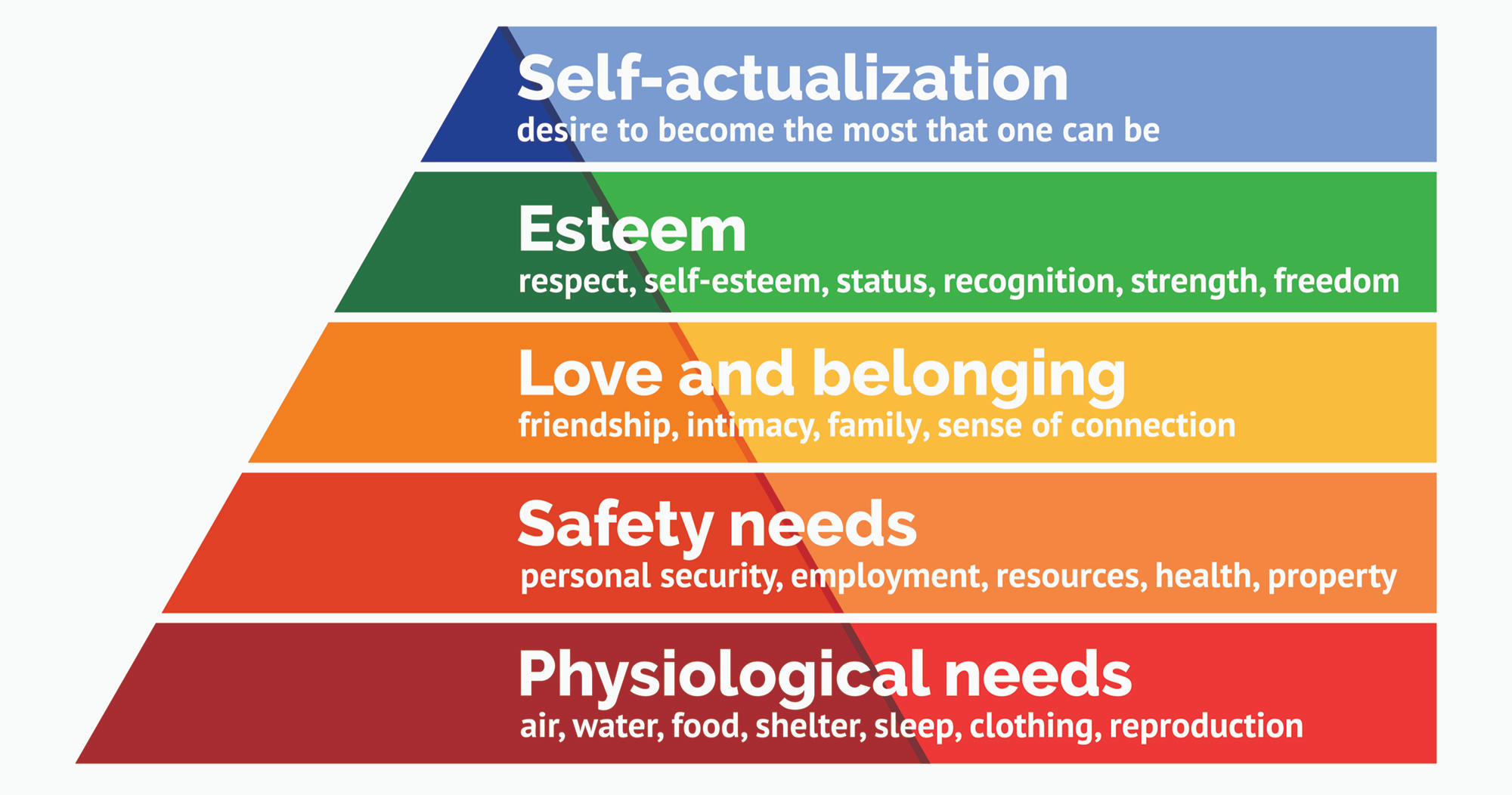Frederick Herzberg’s research, which answered the issue, “What do people really want from their work experience?” made a significant contribution to our understanding of individual motivation. Herzberg polled a large number of workers in the late 1950s to find out what aspects of their employment made them feel particularly good or poor. Some work variables are reliably linked to employee job satisfaction, while others may trigger job dissatisfaction, according to the findings. Motivating factors (also known as work satisfiers) are mainly intrinsic job elements that contribute to satisfaction, according to Herzberg. Extrinsic components of the work environment are hygiene variables (also known as task dissatisfiers).
Any employer’s role includes ensuring high employee satisfaction in order to attract high-quality employees and boost productivity. Herzberg’s two-factor theory is one of the most well-known hypotheses about organizational motivation factors. Frederick Herzberg’s dual-factor principle is used by businesses all over the world, and knowing how it works will help you boost your workers’ lives and the company’s productivity.

Let us know what Frederick Herzberg theory is:
Herzberg’s two-factor theory is a psychological theory on organizational motivation formulated in the 1960s by psychologist Frederick Herzberg. Herzberg’s theory divided workplace requirements into two categories: motivation factors that provide workers with a sense of fulfilment, and hygiene factors that decide the basic level of job stability and security.
Despite the fact that Herzberg’s ideas have been widely read and his suggestions implemented at a number of companies over the years, there are some valid concerns about his work. Although his findings have been used to describe employee motivation, his research focused on job satisfaction, which is a different (but related) concept than motivation. Other criticisms centre on Herzberg’s methodology’s inconsistency, the theory’s failure to account for the effect of individual characteristics, and the presumed correlation between performance and retention. Nonetheless, Herzberg’s queries about the related to job fulfilment and the impacts of internal and external factors on employee behaviour have proven to be an important addition to the development of performance and employee fulfilment concepts.
Hygiene Factors:
According to Herzberg, having a clean work environment is essential for preventing employee dissatisfaction. Because the two-factor theory states that motivational and hygiene factors must be discussed separately, employers must understand what hygiene factors are and how to improve them. According to Herzberg, the following are some of the most important hygiene factors (also known as maintenance factors):
- 1. Wage: Low pay can quickly lead to employee disappointment. To keep job dissatisfaction low, workers should be properly compensated.
- 2. Perks: Most full-time workers expect additional benefits, so they fall under the category of hygiene. An employer should make sure that the benefits they offer are comparable to those offered by other businesses in their field.
- 3. Job stability: When workers feel comfortable in their jobs, they are less likely to be dissatisfied at work. Employers who want to improve workplace hygiene should let workers know how much they are appreciated and how safe their jobs are.
- 4. Workplace environments: Workers accept their employers to provide them with pleasant and secure working environments. Companies should not cut standards when it comes to the wellbeing and safety of their workers in order to achieve high hygiene.
Motivational Factors:
These are all directly linked to the job. The presence of these elements creates a highly motivating environment. Their absence, on the other hand, does not cause any disappointment. Recognition for accomplishments, progress in the work itself, the potential of growth and development, and responsibility are all motivating factors.
Accomplishment and obligation are two factors that are related to the job itself, while others are obtained from it. These elements are referred to as motivators or satisfiers. They are job-related and focused on the job’s content.
The industry has benefited from Herzberg’s model, which has provided new opportunities and perspectives. ‘Job enrichment’ is one of these options. It is the activity of enhancing the work in such a way that more motivators are available. The main goal of job enrichment is to maintain a high level of hygiene (maintenance) while boosting motivational factors.
The terms “job enrichment” and “job enlargement” are not interchangeable. The goal of job expansion is to make the job more complex and diverse in order to avoid monotony. Job enrichment aspects motivate workers more by associating greater responsibility and increasing the level of difficulty, resulting in job satisfaction.
Only a difficult job can bring work satisfaction. Herzberg’s motivation factors are inextricably linked to the nature of the work. The central theme of his theory is that a worker derives genuine pleasure from his work. When we consider the situation in India, workers place a higher value on job security because employment opportunities are limited due to a large number of applicants.
There is another theory proposed by Maslow. Maslow’s hierarchy of needs is a psychological motivational theory that consists of a five-tier characteristic of social needs, which is often represented as hierarchical levels within a pyramid. Physiological (food and clothing), safety (job security), love and belonging needs (friendship), esteem, and self-actualization are the needs from the bottom of the hierarchy up. Entities must attend to lower-level needs before they can attend to higher-level needs.

The five stages of the original hierarchy of needs model are as follows:
Individuals are inspired to meet certain needs, according to Maslow (1943, 1954), and also some needs take priority over others.
Physical survival is our most fundamental need, and it will be the driving force behind our actions. When that level is completed, we are motivated to move on to the next level, and so on.
- 1. Physiological needs- air, food, drink, shelter, clothing, warmth, and sleep are all biological necessities for human survival.The human body cannot function optimally if these needs are not met. Physiological needs are the most important, according to Maslow, since all other needs are secondary until these are met.
- 2. Safety needs- Once a person’s physiological needs are met, security and safety become more important. In their daily lives, people seek order, consistency, and control. These requirements can be met by the family and society.
Emotional security, financial security, law and order, fearlessness, social stability, property, health and wellbeing are just a few examples. - 3.Needs for love and belonging – after physiological and safety needs are met, the third level of human needs is social, which includes feelings of belonging. Behavior is driven by the need for interpersonal relationships.
Friendship, intimacy, trust, and acceptance, as well as receiving and giving affection and love, are examples. Belonging to a community, affiliating (family, friends, work). - 4. Maslow divided esteem needs into two categories: (I) reverence for oneself (dignity, accomplishment, mastery, independence) and (ii) the desire for reputation or respect from others (e.g., status, prestige). Maslow stated that for children and adolescents, the need for respect or reputation is the most important, and that it comes before true self-esteem or dignity.
- 5. The highest level in Maslow’s hierarchy, self-actualization needs refer to the realisation of a person’s potential, self-fulfillment, personal development, and peak experiences. This level is defined by Maslow (1943) as the desire to achieve everything one can, to become the best one can be.
Herzberg’s Motivation Theory model, also known as the Two Factor Theory, identifies two factors that influence workplace motivation. Hygiene and motivational factors are two of these factors. If hygiene factors are not present, an employee will work less. If motivating factors are present, an employee would be encouraged to work harder. Hence, health and safety comes under Frederick Herzberg’s Hygiene factor.








